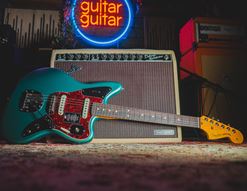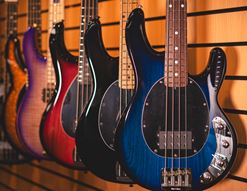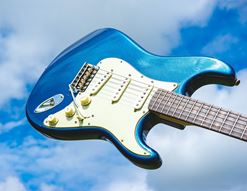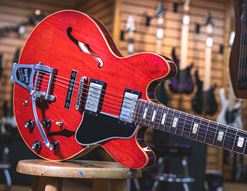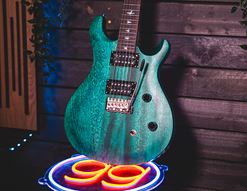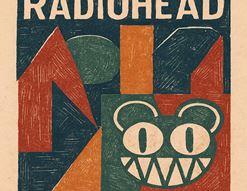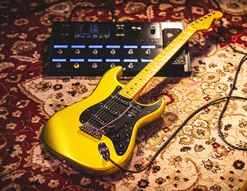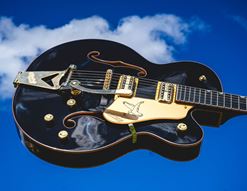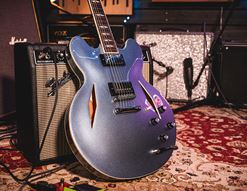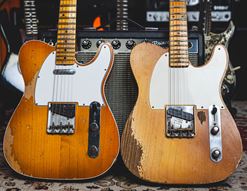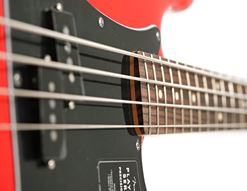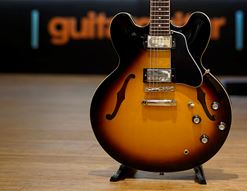What are the most famous bass guitars in the world?
I don’t know about you, but I’d say there are four that stand out quite significantly as world favourites: the Fender Precision bass, the Fender Jazz bass, the Music Man StingRay and the Rickenbacker 4003.

Would you agree with that? In terms of major, significant use of historical and inspirational music, these four swing harder at the ball than any others. Now, of these four, I’d go as far as to say that the StingRay has a lot of Fender ‘DNA’ in its design (Music Man was Leo Fender’s brand, after all). The Rickenbacker, though?
There’s nothing else out there like the Rickenbacker.
Contents
Where are Rickebacker Basses Made?
What Makes Rickenbacker Basses Different?
What are Rickenbacker Basses Made From?
What are the Most Famous Rickenbacker Basses?
The Legendary Rickenbacker Bass
Where are Rickebacker Basses Made?
- Made in the USA as always
- No overseas builds or sub brands
- Scarcity adds to the mystique of the brand
Rickenbacker basses, like their guitars, are made in California. The brand started in Los Angeles in the 1920s, and they still build everything in their Santa Ana premises.
Rickenbacker are a pretty rare company in guitar building terms at least. Why? Well, they’ve fought hard over the years NOT to expand and expand, keeping their premises much as it has been for the last century, size-wise. They definitely understand the value of scarcity, supply and demand, because Rickenbacker guitars and basses are definitely not always available in huge quantities.
Now, that’s me saying that as someone who knows for a fact that guitarguitar buys as many Rickenbackers as we possibly can, because the demand for them is perennially high. The demand outstrips the supply, and so there is always a degree of excitement when a new Rickenbacker delivery arrives from the USA. They don’t make enough of them! This means that those lucky players who get their hands on a Rickenbacker really cherish it.

What Makes Rickenbacker Basses Different?
- Unique Looks, sounds and feel
- A different approach to timbers and design
Rickenbacker are different from almost all other bass brands, for a number of reasons. Most obviously, they are visually unique and therefore very distinctive, but there are other equally significant factors to know here, too. Here are the main things that mark Ricky basses apart from the Fender-copying crowd:
- Visual flair unique to the brand: they’ve not changed their looks much ever
- 33.25” scale length: slightly shorter than standard 34”, allows for a slightly looser feel
- Lacquered fingerboards: this gives an entirely different feel to unlacquered (not all models have this)
- Maple Body: heavy, strong and full of treble, maple is a pretty unusual choice for body timber!
- The unique Rickenbacker sound: the maple body and the custom-made single coil pickups give Rickenbacker basses a toppy-sounding growl that is massively distinctive. Nothing else sounds quite like it.
- Narrower necks: most Ricky necks are narrower at the nut than other brands. Where most basses are 43mm, Rickenbackers are usually 41.4mm. This allows a degree of ‘lead playing’ on the bass that’s harder on other instruments.
So, those are the main differences for me at least, between a Ricky bass and another brand. The last one is significant: think of great Rickebacker bassists like Yes’ Chris Squire and you can just tell how his busy, intricate style required a narrower neck.
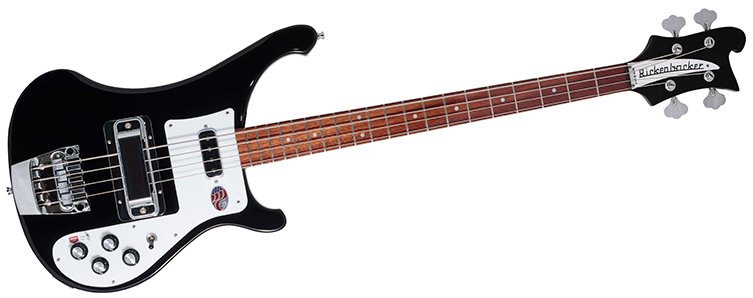
What are Rickenbacker Basses Made From?
- Maple bodies and necks, a very unusual combination
Rickenbacker use maple for their bass bodies and necks, which is quite unusual. Maple is normal for necks, but the strong, dense wood is not normally selected for bodies. This is always how Rickbacker have done things though, and the maple body contributes loads to not only the sound but the feel of a Ricky bass when it's slung around your neck!

What are the Most Famous Rickenbacker Basses?
- Rickenbacker 4003 is the most iconic Rickenbacker bass design
The most famous Rickenbacker bass is arguably the 4003. This is the definitive, archetypal Rickenbacker bass, and in truth, most other varieties of Ricky bass are simply precursors to the 4003 or variants on its design.
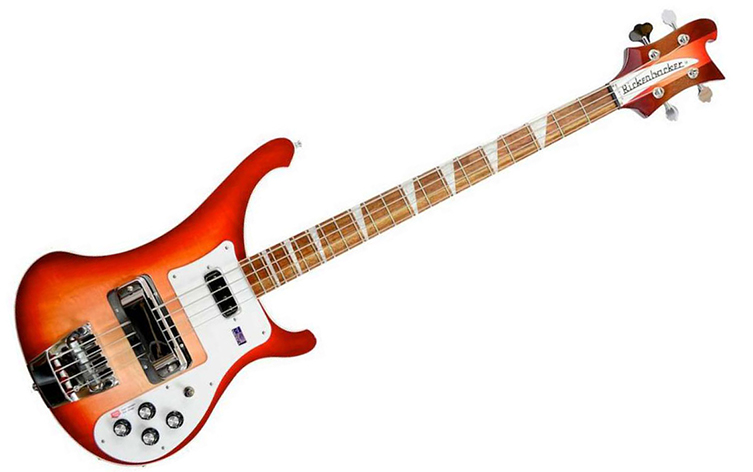
The differences between the 4001 and 4003 models are subtle but significant. The 4003 - which replaced the 4001 model - corrected issues with the truss rod (including an entirely new design) and upgraded the frets, which were deemed to often let down the original 4001 basses. Otherwise, it’s remarkably close, so I’d call the 4003 an update of the 4001 rather than a separate model.
Another popular - though rarer - Rickenbacker bass model is the 4005. This is much more like their guitars in design, with an outline that evokes the famous 330 guitar, and even includes a ‘slash’ sound hole. This is a lighter bass than a 4003, in both sound and physicality. Super cool though, and with a shorter 30.4" scale length, they are easier to play, too.
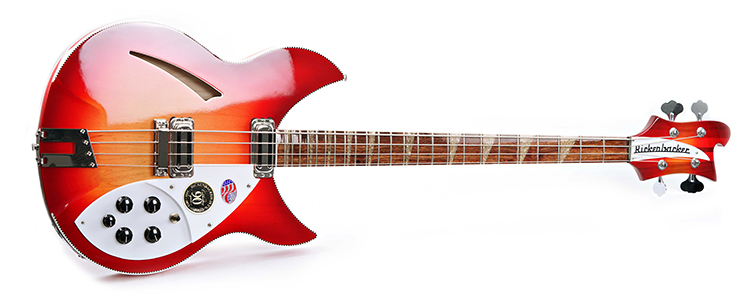
What is Rick-o-Sound?
Rick-o-sound is something you don’t often find on the basses, though models like the 4005 often have this feature. What is it?
Rick-o-sound is a stereo output, basically. You get two jack outputs, and your sound is divided into separate high and low frequency groups, each of which goes out to one of the outputs. This allows you to have a specific amp for these frequencies. It’s unique!

Who Plays a Rickebacker Bass?
- Many of the world’s top bassists choose Rickenbacker
- Rickenbacker is the rockstar’s choice of bass
- Timeless style and iconic vibe make these basses appealing to successive generations
Rickenbacker basses are played by a wide variety of the most famous, well-respected and iconic bassists in music history. From Paul McCartney popularizing it in the 60s to Cliff Burton defining thrash metal on his, Rickenbacker basses are all over music. It’s actually something of a surprise how versatile they are, given how distinctive they both look and sound.
Here’s a partial list of some notable bassists who’ve gone out to make history with their Rickenbacker bass…
- Lemmy Kilminster (Motorhead)
- Youth (Killing Joke)
- Paul McCartney
- Chris Squire (Yes)
- Cliff Burton (Metallica)
- Geddy Lee (Rush)
- Geezer Butler (Black Sabbath)
- Paul D’Amour (Tool/Ministry)
- Kim Gordon (Sonic Youth)
- Mike Mills (R.E.M.)
- Lou Barlow (Dinosaur Jr)
- Nicky Wire (Manic Street Preachers)
The list goes on, but you can see from those players that the strong Rickenbacker bass sound finds a home everywhere.
The Legendary Rickenbacker Bass
It seems that by not changing much at all, Rickenbacker basses have secured their legendary status amongst musicians. Their stylish designs are timeless, their build quality has never dipped over the decades, and that inimitable sound is always relevant and always useful. The Rickenbacker 4003 bass and its stablemates have been chosen by each successive generation of musician to provide the experience that only a Ricky can. They are classics for a reason, and a real antidote to the swampfuls of P and J copycat basses out there in the world.
What are you going to play on yours when you get it?
Click to Browse Our Full Selection of Rickenbacker Basses

